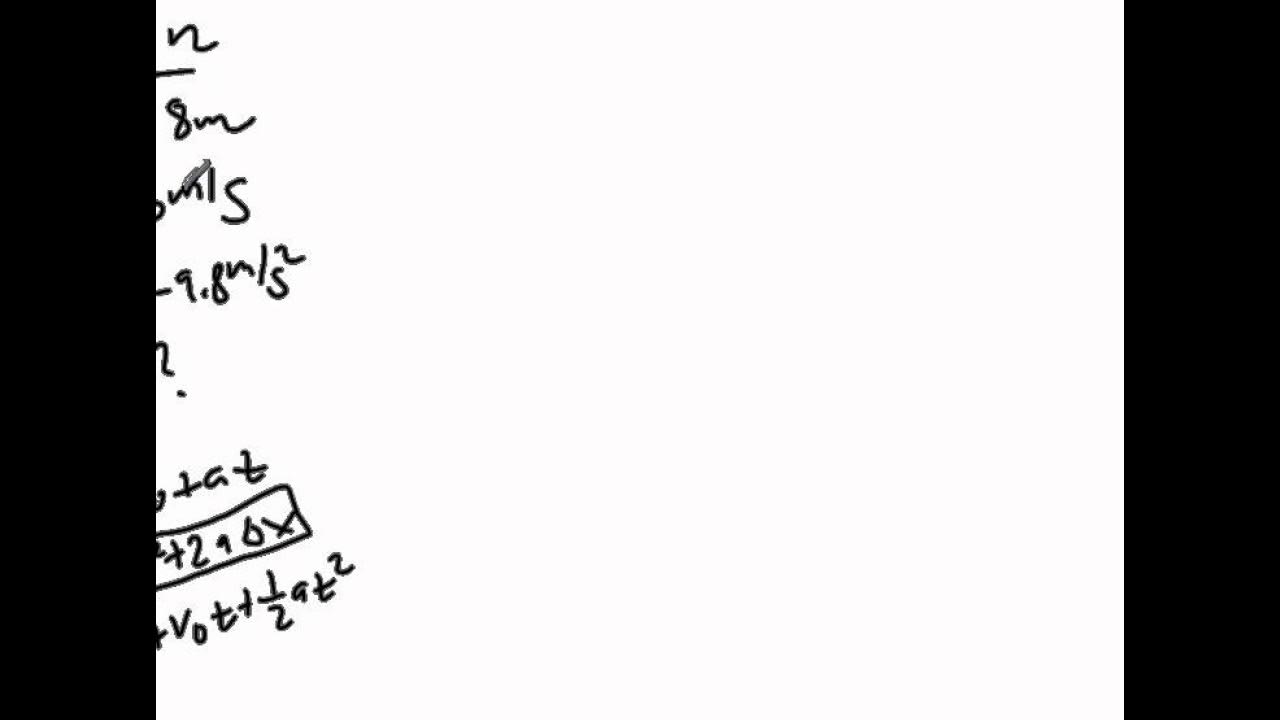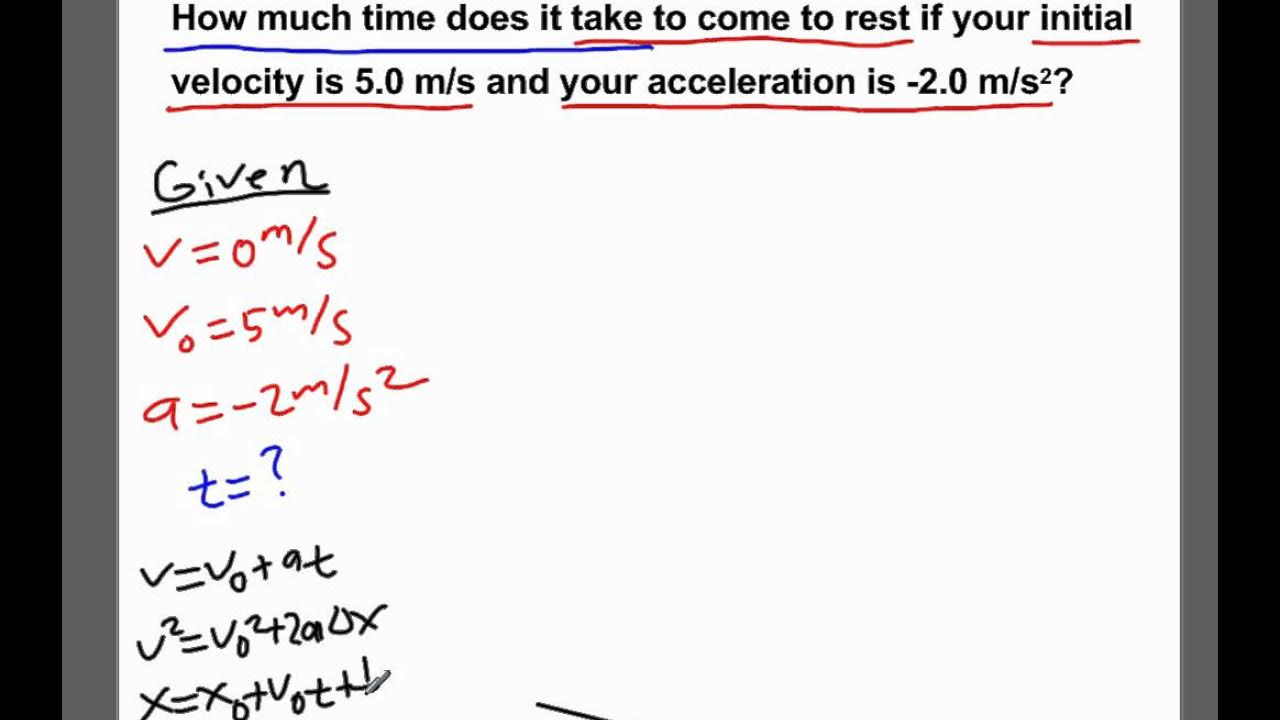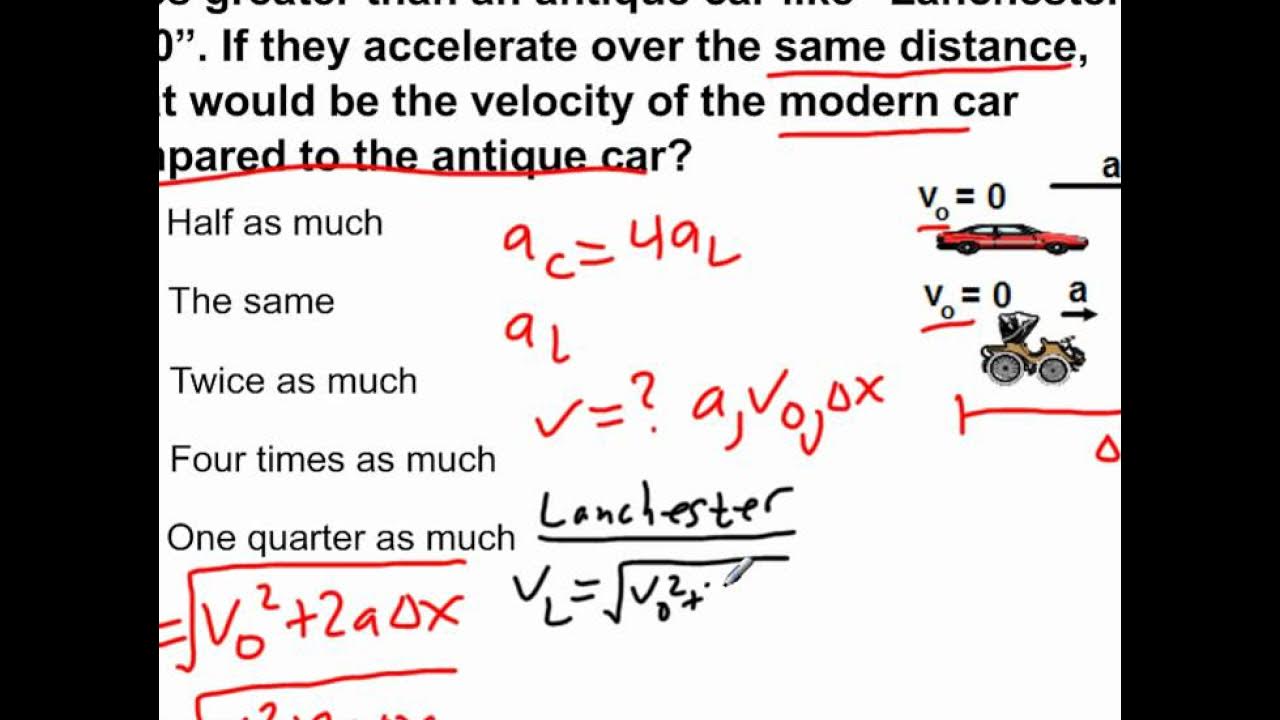DERIVE : s = ut + ½ at² | EQUATIONS OF MOTION (3)
TLDRIn this educational video, the host derives the equation of motion 'S = ut + (1/2)at^2', starting with two fundamental formulas: distance 's = (u + v)/2 * t' and velocity 'v = u + at'. By substituting 'v' from the velocity formula into the distance formula, the host simplifies the equation to the classic kinematic equation, demonstrating a clear and concise method for understanding motion under constant acceleration.
Takeaways
- 📚 The video aims to derive an equation of motion, specifically S = UT + (1/2)aT^2.
- 🔍 Two fundamental formulas of motion are introduced: the formula for distance (S = (U + V)/2 * t) and the formula for final velocity (V = U + at).
- 🔧 The process involves manipulating these formulas to eliminate the variable V from the distance equation.
- 📝 The substitution of V with (U + at) from the second formula into the first formula is the key step in the derivation.
- 🧩 After substitution, the equation simplifies to S = U + (U + at) / 2 * t, which is then further simplified.
- 🔢 The simplification leads to S = 2UT + (1/2)at^2, which is then rearranged to the final form.
- 📉 The concept of dividing a sum by a constant (a + b)/c = a/c + b/c is used to simplify the equation.
- 📈 The final derived equation is S = UT + (1/2)aT^2, which relates initial velocity, acceleration, and time to the distance traveled.
- 👍 The video encourages viewers to like and subscribe if they find the content useful.
- 📚 The script is educational, providing a clear step-by-step explanation of how to derive the motion equation.
Q & A
What is the main topic of the video?
-The main topic of the video is deriving one of the equations of motion, specifically S = ut + (1/2)at^2.
What are the two formulas of motion mentioned in the video?
-The two formulas of motion mentioned are: 1) the formula for distance, which is s = (u + v) / 2 * t, and 2) the formula for final velocity, v = u + at.
Why is the final velocity (v) important in deriving the equation of motion?
-The final velocity (v) is important because it allows us to express the motion in terms of initial velocity (u) and acceleration (a), which are then used to derive the equation S = ut + (1/2)at^2.
How is the final velocity formula used to eliminate v from the distance formula?
-The final velocity formula (v = u + at) is substituted for v in the distance formula to eliminate v and express the equation solely in terms of u, a, and t.
Outlines
📚 Introduction to Deriving the Motion Equation
The video begins with a warm welcome to the channel and introduces the goal of deriving a specific motion equation, S = UT + (1/2)aT^2. The presenter mentions the necessity of understanding two fundamental motion formulas: the distance formula, S = (U + V) / 2 * t, and the relationship between initial velocity, final velocity, and acceleration, V = U + aT. The intention is to eliminate the final velocity, V, from the equation by substituting it with the expression derived from the second formula.
🔍 Substituting to Remove Final Velocity
This paragraph delves into the process of eliminating the final velocity, V, from the distance equation by substituting it with the expression from the second formula. The presenter demonstrates the algebraic manipulation by replacing V with (U + aT) and then simplifying the equation step by step. The explanation involves basic algebraic principles, such as factoring and combining like terms, to reach a simplified form of the motion equation.
📝 Simplifying to Obtain the Desired Equation
The presenter continues with the simplification process, showing how to derive the final motion equation by dividing terms and using algebraic identities. The explanation includes breaking down the equation into simpler components and then recombining them to form the desired equation, S = UT + (1/2)aT^2. The presenter emphasizes the logic behind the simplification, comparing it to basic division and addition of fractions with the same denominator.
🎉 Conclusion and Call to Action
The final paragraph wraps up the video with the successfully derived motion equation and invites viewers to like and subscribe to the channel if they found the content useful. The presenter thanks the audience for watching and provides a brief recap of the derived equation, reinforcing the educational value of the video.
Mindmap
Keywords
💡Equation of Motion
💡Derive
💡Distance
💡Velocity
💡Acceleration
💡Formula
💡Uniformly Accelerated Motion
💡Integration
💡Algebraic Manipulation
💡Substitution
💡Simplification
Highlights
Introduction to deriving an equation of motion
Equation to be derived: S = UT + (1/2)AT^2
Two formulas of motion required for derivation
First formula: S = (U + V) / 2 * t
Second formula: V = U + AT
Objective to eliminate V from the equation
Substitution of V with the second formula
Simplification of the equation by replacing V
Expression of S in terms of U, A, and t
Multiplication of terms with time (t)
Division and simplification of the equation
Use of algebraic properties to simplify the expression
Final derived equation: S = UT + (1/2)AT^2
Explanation of the algebraic process used
Cancellation of terms and addition for simplification
Finalization of the derived motion equation
Encouragement to like and subscribe for more content
Transcripts
5.0 / 5 (0 votes)
Thanks for rating:





